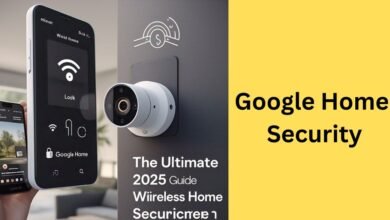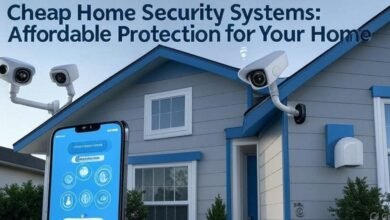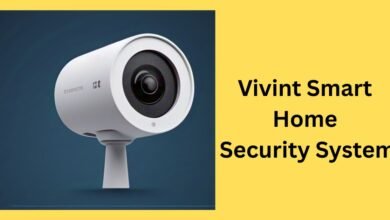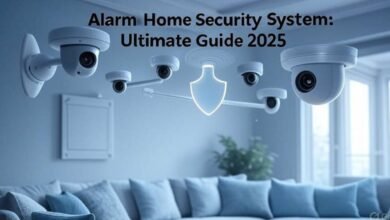Best Home Security System With Indoor And Outdoor Cameras
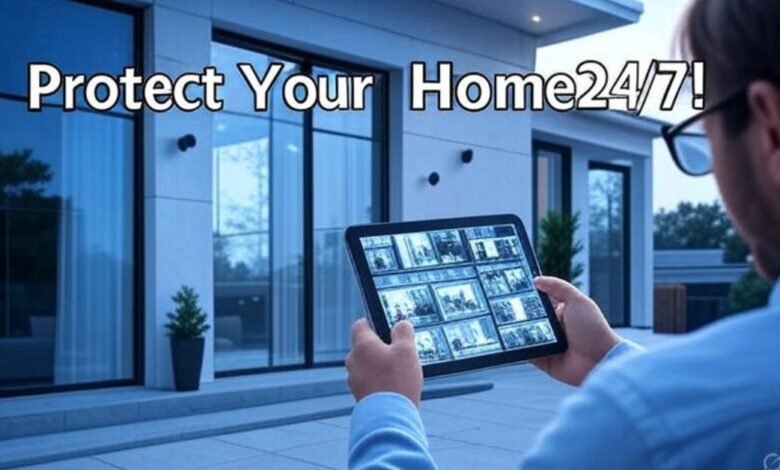
Introduction
Ever thought about what’s happening around your home when you’re not there? You’re not alone. home security system with indoor and outdoor cameras has become more of a necessity than a luxury these days. And at the heart of a reliable system? A solid setup with a home security system with indoor and outdoor cameras.
These aren’t just gadgets—they’re your virtual eyes when you’re away, helping you sleep better at night and enjoy vacations without that nagging feeling of “what if something happens at home?”
Let’s break down why a home security system with indoor and outdoor cameras is the ultimate way to protect your space and your peace of mind.
Table of Contents
Benefits of a Home Security System
Deterring Criminal Activity
Let’s start with the obvious. Burglars hate cameras. A visible home security system with indoor and outdoor cameras is like a giant flashing “NO TRESPASSING” sign. Studies show that homes with security systems are far less likely to be targeted.
Peace of Mind for Homeowners
There’s no better feeling than knowing your family and property are safe. Whether it’s checking if the kids got home from school or making sure the dog didn’t chew the couch—your Home Security System with Indoor and Outdoor Cameras keeps you in the loop.
Remote Monitoring and Real-Time Alerts
Most modern systems let you check in from your phone. Someone at the front door? You’ll get a ping. Movement in the backyard? Another ping. You’re basically your home’s own personal security chief.
Insurance Benefits and Lower Premiums
Many insurance companies offer discounts for homes with monitored systems. You could save a decent chunk annually—plus, you’ll have video proof if you ever need to file a claim.
Best Home Security Systems Hawaii
Understanding the Components
Indoor Cameras
Features to Look For
Indoor cameras are about more than just recording. Look for high-definition video, night vision, two-way audio, and motion sensors. Some even include baby monitor functions!
Ideal Placement Areas
Stick them in high-traffic areas: entryways, living rooms, and hallways. Avoid bathrooms (for obvious reasons) and bedrooms if you value privacy.
Outdoor Cameras
Weatherproofing and Night Vision
These bad boys face the elements daily. Make sure they’re waterproof (IP65+ rating) and have infrared or color night vision so you’re covered day and night.
Wide-Angle and Motion Detection
A wider view means fewer blind spots. And motion detection? That’s your best friend when it comes to alerting you about activity in your yard, driveway, or front porch.
Smart Features You Can’t IgnoreIntegration with Smart Home Devices
Love Alexa or Google Assistant? Most camera systems play nicely with them. Want to see the driveway cam on your smart TV? Just ask!
AI-Powered Alerts
Smart cameras can now distinguish between a tree swaying and someone lurking. Some can even tell the difference between pets, people, and vehicles. Fewer false alarms, more meaningful alerts.
Cloud vs Local Storage
Cloud storage is convenient—your footage is safe even if the camera gets stolen. But local storage (like an SD card or NVR) means no monthly fees. Choose based on your budget and privacy concerns.
Installation Options
DIY Installation
Many modern systems are plug-and-play. If you can hang a picture frame, you can install a camera. Wireless options are great for renters or folks on a budget.
Professional Installation
If you’re not tech-savvy or have a larger home, hiring pros ensures everything’s done right. They’ll also help optimize placement for maximum coverage.
Privacy and Security Concerns
Protecting Your Footage
Use strong passwords. Update your firmware. And always enable encryption if it’s available. You don’t want strangers accessing your video feeds.
Legal Aspects of Surveillance
Check your local laws—some areas require you to post signs or inform guests they’re being recorded. And always avoid pointing cameras directly into neighbors’ properties.
Top Brands to Consider
When choosing a Home Security System with Indoor and Outdoor Cameras, picking the right brand matters. Here are a few trusted names:
Ring
Famous for its doorbell cams, Ring also offers full systems with indoor/outdoor options. Great integration with Alexa.
Arlo
High-res video, sleek design, and lots of smart features. Arlo’s wire-free models are perfect for quick installs.
Nest
Google’s Nest Cam lineup brings solid image quality and excellent smart home integration. Monthly fees are a bit steep, though.
Eufy
Great if you want privacy-first, no-subscription options. Eufy cams offer local storage, 2K video, and smart alerts without cloud fees.
Cost Breakdown
Upfront Costs
Basic kits with 2–3 cameras can start at $150. More advanced systems with 4K resolution, night vision, and AI features might run up to $800 or more.
Subscription Services
Expect to pay $3–$15/month per camera if you go for cloud storage and smart alerts. Some companies offer bundle plans to save you money.
Hidden Fees to Watch Out For
Look for activation fees, installation costs, or long-term contracts (especially with traditional providers). Read the fine print.
Real-Life Scenarios
Using a Home Security System with Indoor and Outdoor Cameras isn’t just about tech—it’s about real impact:
Foiling a Break-In
One homeowner caught a break-in attempt live on their phone, called the cops, and scared off the thief before they even got inside.
Keeping an Eye on Deliveries
No more wondering if your package actually arrived—just check the footage and know for sure. Porch pirates, beware!
Monitoring Elderly Family Members
Indoor cams can help you ensure your elderly parents or grandparents are safe without being intrusive. Motion alerts and two-way audio add an extra layer of comfort.
Maintenance Tips
Cleaning Camera Lenses
A dusty lens equals blurry footage. Wipe them down monthly with a microfiber cloth—especially outdoor units.
Software Updates
Manufacturers release updates that fix bugs and add features. Don’t skip them. Set updates to auto if possible.
Battery and Power Supply Checks
If you’re running on battery, keep tabs on the charge. Hardwired cams? Check cables and connections now and then.
Choosing the Right System for Your Home
Every Home Security System with Indoor and Outdoor Cameras should match your home’s unique needs:
Apartment vs Detached House
Apartments may only need 1–2 indoor cams. Houses with yards? Go for multiple outdoor cams covering all entry points.
Urban vs Rural Considerations
In cities, you’ll want more anti-theft features. In rural areas, wider angle and long-range motion detection is more important.
Pet-Friendly Features
Got a dog or cat? Choose systems with pet-friendly motion detection to avoid endless alerts every time Fido runs by.
Common Mistakes to Avoid
Poor Camera Placement
Too high, too low, or blocked by a plant? Reposition until you get the best angle. Trial and error is your friend here.
Ignoring Firmware Updates
Security flaws are real. Updates fix vulnerabilities, so don’t skip them or delay installing.
Forgetting About Data Storage
What happens if you run out of storage space or forget to back up important clips? Plan ahead and check your limits.
Future of Home Security
The future of the Home Security System with Indoor and Outdoor Cameras is looking pretty futuristic:
AI and Facial Recognition
Imagine a system that knows your family’s faces and alerts you only when strangers are around. That future’s already here.
Drone Surveillance Integration
Flying security patrols may sound like sci-fi, but companies are already testing drone cams for larger properties.
Predictive Crime Mapping
Some systems may soon integrate with local crime databases to give you heads-up alerts based on real-time threats in your area.
Conclusion
Installing a Home Security System with Indoor and Outdoor Cameras isn’t just a smart move—it’s a game-changer. It’s about more than just gadgets and alerts. It’s about feeling safe, being in control, and knowing you’ve done everything you can to protect what matters most.
Whether you’re a tech nerd or someone who just wants to sleep better at night, there’s a setup out there that’s perfect for your home. Go ahead—take that first step. Your future self will thank you.
FAQs
1. How many security cameras do I really need?
It depends on your home’s size and layout. Most homes do well with 2–3 outdoor cameras and 1–2 indoor cameras covering main entry points and living areas.
2. Can I access my cameras from my smartphone?
Yes! Most modern systems have companion apps that let you view live feeds, receive alerts, and even speak through the camera in real time.
3. Are home security cameras always recording?
Not always. Some only record when motion is detected, while others offer continuous recording depending on your storage settings.
4. Do I need internet for my security system?
Yes, for remote access and cloud storage. However, local storage systems can still record without an internet connection.
5. What’s better: wireless or wired cameras?
Wireless is easier to install and more flexible. Wired offers more stable connections and unlimited power—great for long-term setups.
